Update: This article was last updated on 6th January 2026 to reflect the accuracy and up-to-date information on the page.
Learning to code can be so much of an adventure and even a fun experience for kids, especially when it means creating a game. Of all programming languages, there is no one better than Python for kids; it is that simple, versatile, and learner-friendly as well. With the pleasure of coding the Python game and learning fundamental programming, kids will feel the enjoyment. In this blog, let’s explore some of the most exciting python games the kids can make on their own or with a wee bit of guidance using python.
“While Unreal Engine runs on C++, Python allows for quick iterations and is often used for scripting game mechanics and tools, making it an essential language for game developers of all levels.”
– Tim Sweeney (Epic Games, Founder of Unreal Engine)
Let’s delve into the versatility of Python, the go-to language for young coders. We’ll break down some exciting Python coding games for kids, from beginner to advanced projects. This exploration will open up a world of possibilities, showcasing how Python can be used to create a wide range of games, from simple to complex, and everything in between.
Why Python is Great for Kids to Code Games?
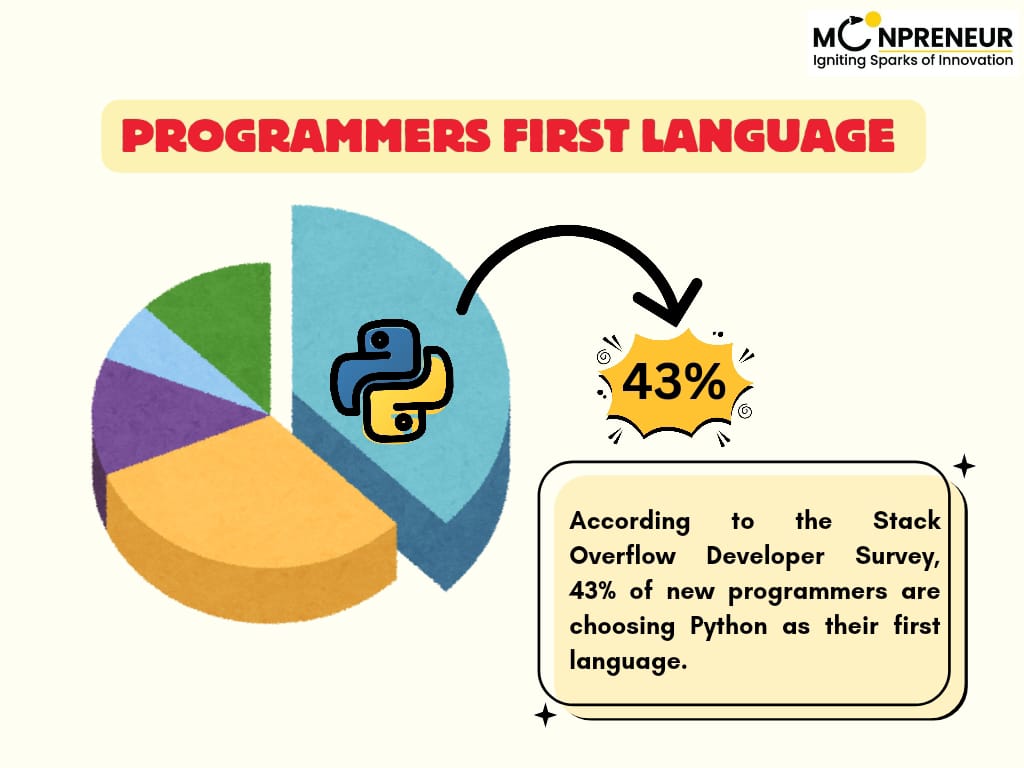
Python has become incredibly popular, especially among beginner coders. According to the Stack Overflow Developer Survey, 43% of new programmers are choosing Python as their first language. Python’s readability, combined with libraries such as Pygame and Turtle, makes it easy for kids to grasp core programming concepts while building engaging projects. Learning Python not only teaches logical thinking, problem-solving, and creativity, but also introduces kids to a skill that is in high demand in the job market. Game development with Python is a valuable learning tool for children and teens, preparing them for a future in technology.
Top Python Games Kids Can Code
Let’s delve into the versatility of Python, the go-to language for young coders. We’ll break down some exciting Python coding games for kids, from beginner to advanced projects. This exploration will open up a world of possibilities, showcasing how Python can be used to create a wide range of games, from simple to complex, and everything in between.
Similar reading: Building Skills and Confidence with Python Programming
Classic Games for Beginners
1. Snake Game: A Classic Beginner Project
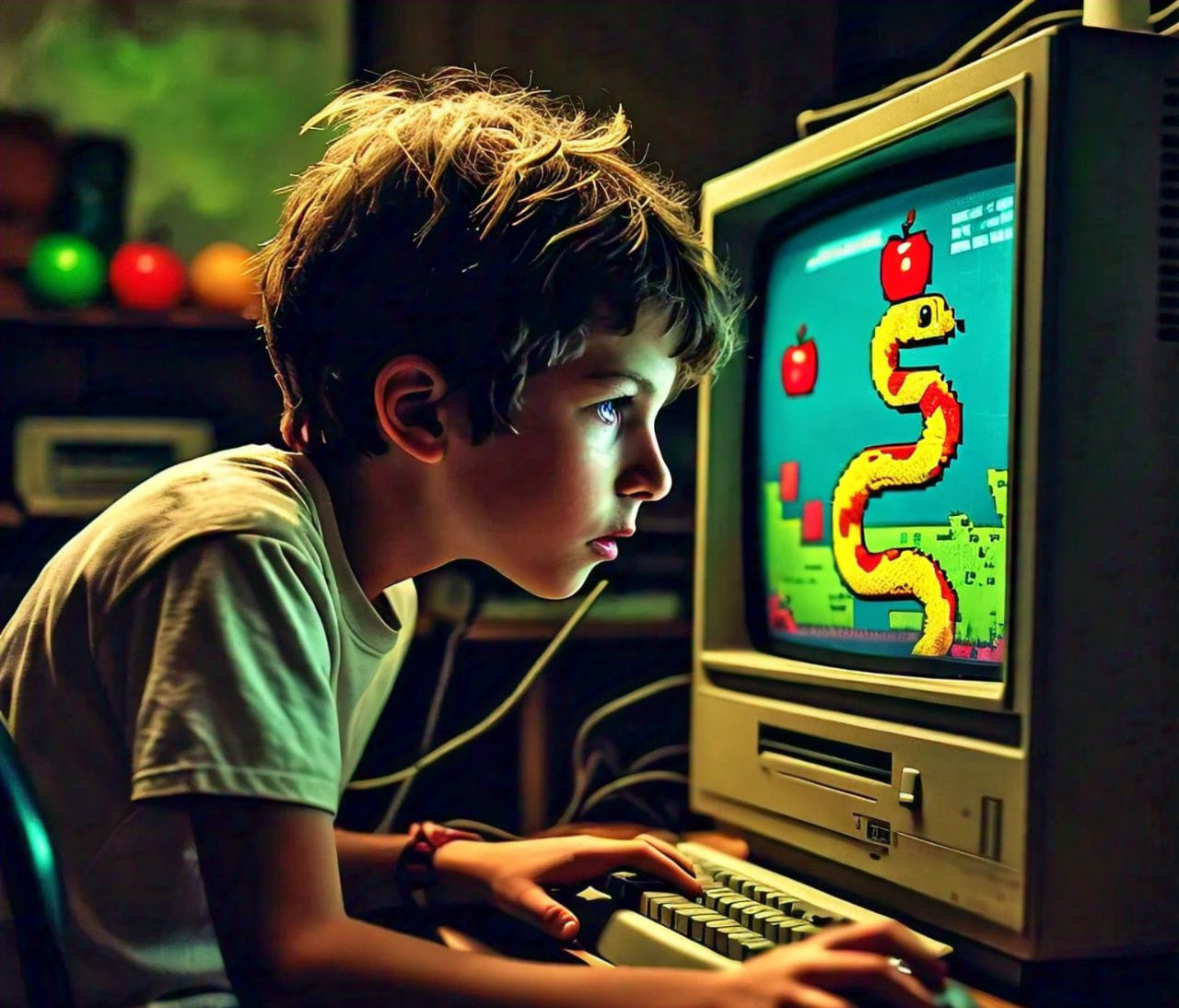
The Snake Game is a classic, easy project for beginners. With Python libraries like Pygame, kids can learn important programming concepts such as loops, functions, and if statements by guiding the snake to eat as many “apples” as possible without crashing into walls or itself. This game teaches basic game logic and how to create simple visuals, making the design process enjoyable and easy to follow.
How to Play: Guide the snake to eat the apples and make it grow, but avoid crashing into walls or itself.
Real-World Application: The skills learned from Snake can be applied to basic game design, helping kids understand how to create game mechanics that are both fun and functional. Whether for apps or video games, this project lays the foundation for developing interactive experiences.
2. Tic-Tac-Toe: The Strategy Game with a Twist
Tic-Tac-Toe is a simple Python game that’s great for beginners, especially kids. It helps teach basic game logic with very simple graphics, so it’s easy to code, even for those with no programming experience. While creating this classic game, kids will learn about using 2D arrays and loops and how to take user input. They’ll also get to explore how to design a program that can recognize winning patterns in the game.
Similar reading: Level up with Python Tools for Kids

How to Play: Mark your spots on a 3×3 grid and try to get three in a row, either vertically, horizontally, or diagonally.
Game Design Tip: To make your Tic-Tac-Toe game more advanced, try adding a computer player using basic AI. Learn how to make the computer pick spots on the grid through a minimax algorithm, turning it into a strategic challenge.
Intermediate Python Games
3. Adventure Maze Game: Get Creative with Levels and Obstacles
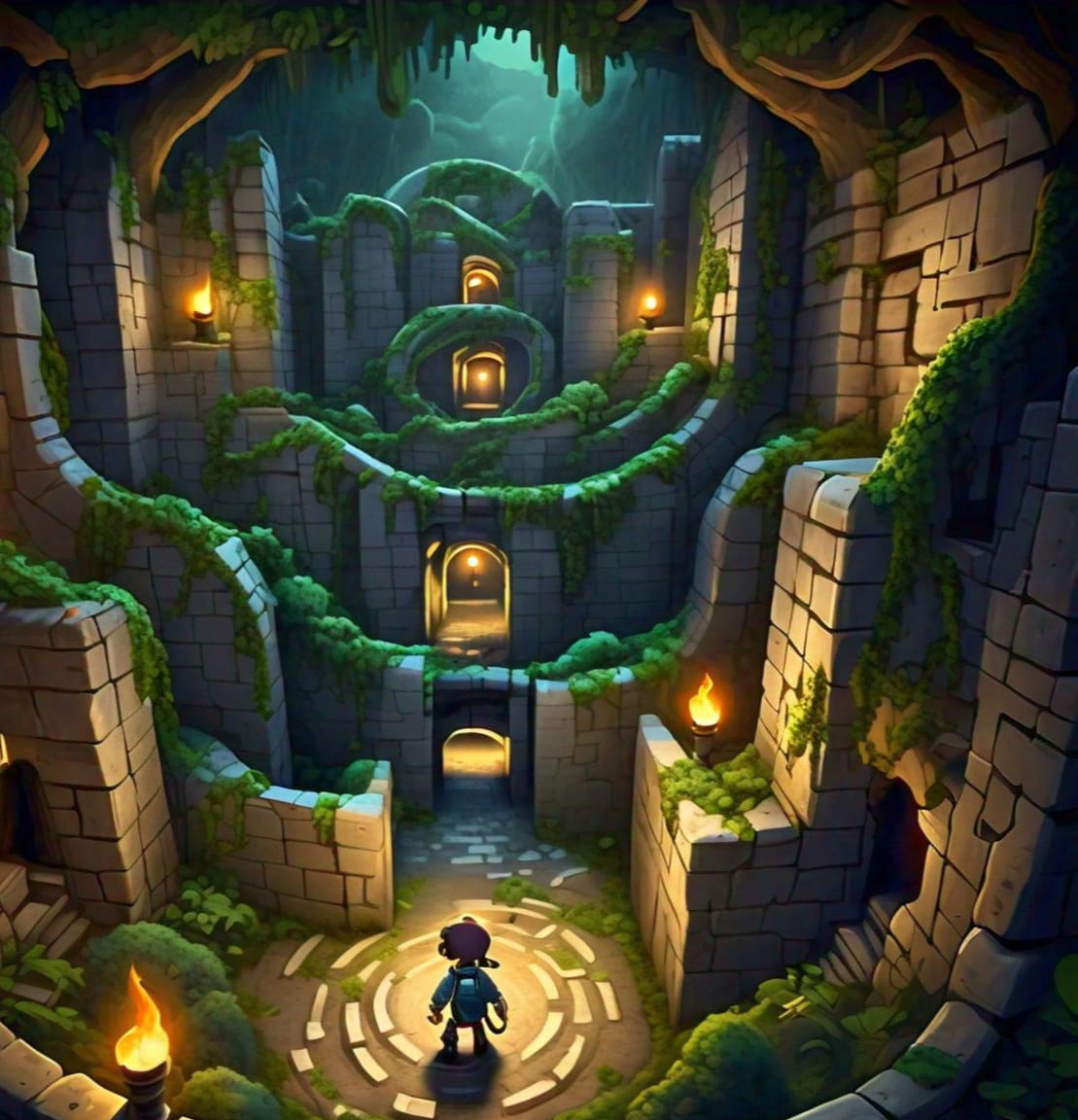
For those ready to level up, the Adventure Maze Game is an ideal choice. This game is a fun way for kids to learn Python by creating their own mazes and programming how the player interacts with them. Using Pygame, they can design things like walls, collectibles, and enemies, which helps them understand basic artificial intelligence (AI) concepts, like how to avoid obstacles. This game development project also gives kids the freedom to make their maze levels and challenges, letting them be creative and interactively explore coding.
How to Play: Navigate your character through a maze, avoid obstacles, and collect rewards to reach the exit.
Real-World Application: The Adventure Maze Game helps introduce kids to programming concepts used in game design and AI. By creating challenges for the player, they’re learning problem-solving techniques that can be used in real-world applications like app development or game design. The skills they learn from this game can be applied to creating user-friendly interfaces, designing engaging experiences, and solving complex problems in various industries.
4. Dot Connect Game: Fun with Patterns and Scores
Dot Connect is a game where players link dots to form shapes, earning points as they complete patterns. This game combines creativity with logic, teaching kids about user inputs, scoring, and pattern recognition. It’s a great project to introduce Tkinter or Pygame, as these libraries make it easy to handle graphics and create a simple user interface.

Through this project, kids can learn to manage points, track the number of moves, and experiment with colors and shapes. This project provides an opportunity to play with different shapes, animations, and scoring systems, which are foundational for more complex games later.
Similar reading: Best Grammar Games for Kids: Fun Ways to Learn Language Skills
How to Play: Connect the dots to form shapes and earn points, but be mindful of how many moves you make.
User Testimonial: “I created a Dot Connect game for my school project, and my classmates loved it! It was simple but fun to build, and I learned a lot about graphics and game mechanics.” — Emily, 13 years old.
Advanced Game Projects
5. Platformer or Shooting Game: Jump, Duck, and Aim
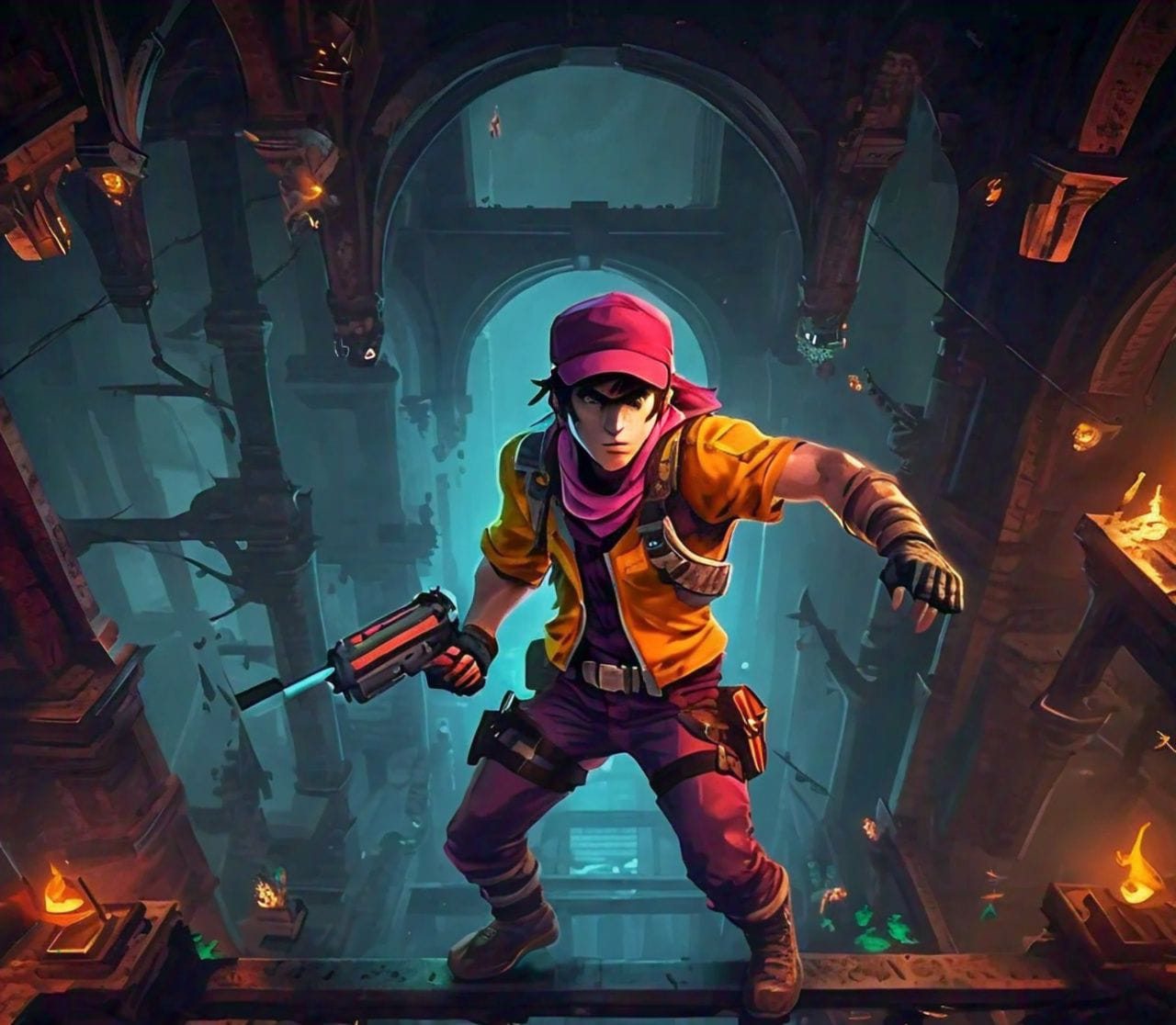
Platformer and shooting games help kids understand basic game physics, like gravity and how objects interact with each other. Creating these games involves learning object-oriented programming (OOP), which is a key skill for more complex coding. Tools like Pygame make it easier to add features such as jumping, shooting, and scoring, allowing kids to explore how popular games, such as Super Mario, work behind the scenes.
How to Play: Jump over obstacles, shoot enemies, and collect items while navigating through different levels.
Game Design Tip: To take your platformer game to the next level, try implementing physics such as gravity and velocity for a more realistic game experience. This will also help you understand how game engines handle physics-based games, especially when you’re making a game in Unity and Unreal Engine.
6. Text-Based Adventure Game: Storytelling with Code
For kids with a creative flair, a Text-Based Adventure Game is a fantastic choice. Text-based games, with their decision trees and branching storylines, help teach kids about things like conditional logic and data structures. These games also give kids the chance to write and code their own stories, making them especially fun and engaging for those who enjoy being creative.

How to Play: Make decisions that affect the storyline and explore different outcomes based on your choices.
Step-by-Step Guide: How to Code a Snake Game
For a hands-on experience, here’s a simple guide on how to make a Snake game in Python for beginners. Ready to start coding? Let’s walk through the basics of creating a simple Snake Game. Here’s how:
1. Install Pygame
To get started, open your Python environment and type:
pip install pygame
2. Set Up the Game Window
Begin by creating a basic game window and initializing Pygame:
import pygame
pygame.init()
screen = pygame.display.set_mode((600, 400))
pygame.display.set_caption(“Snake Game“)
3. Create Game Elements
Define the snake’s color, size, and starting position. Then, add food items that the snake can “eat” to grow.
4. Define Game Logic
Add movement controls to allow players to control the snake’s direction. Track collision with the edges of the game window, which ends the game.
5. Run the Game Loop
Use a game loop to keep the window open and update the screen continuously:
running = True
while running:
for event in pygame.event.get():
if event.type == pygame.QUIT:
running = False
pygame.display.flip()
pygame.quit()
By following these steps, kids will learn to create a simple game and understand Python’s fundamental concepts. They can also add custom elements, such as changing colors or adjusting the snake’s speed, for a more personalized game.
Learning and Developmental Benefits of Coding Games in Python
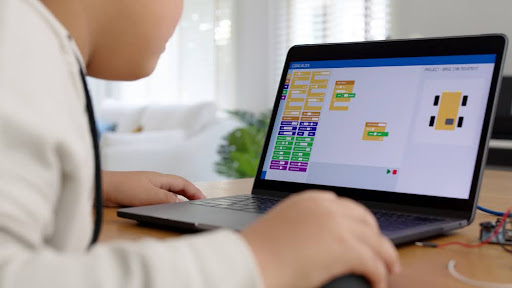
Python Coding games provide kids with several developmental benefits. Studies show that coding helps improve logical thinking and problem-solving skills in young learners.
According to a report from Digital Promise, hands-on coding activities can boost critical thinking and resilience as kids learn how to approach problems systematically and persist through challenges. Building games not only improves computational thinking but also fosters creativity as kids experiment with game design and add personal touches to their projects.
Conclusion
Python games for kids offer an excellent entry point into programming. Whether they’re creating a simple Snake Game or designing a complex platformer, Python gives kids the tools to code games they’ll love to play. These coding projects not only teach fundamentals of coding but also improve problem-solving, logical thinking, and creativity. Encouraging kids to code their games is a fun way to prepare them for a future in tech and STEM fields.
Moonpreneur is on a mission to disrupt traditional education and future-proof the next generation with holistic learning solutions. Its Innovator Program is building tomorrow’s workforce by training students in AI/ML, Robotics, Coding, IoT, and Apps, enabling entrepreneurship through experiential learning.


























The clear structure, starting from beginner-friendly projects like Snake and Tic-Tac-Toe to advanced ones like platformers, makes it accessible for learners of all levels. I also appreciate how it highlights the use of Python libraries like Pygame and Turtle, which simplify coding for young enthusiasts. Python’s popularity, as mentioned in the blog, aligns with trends I’ve read about – it’s indeed one of the best starter languages.
Some of the projects, such as the platformer or text-based adventure game, might be too complex for kids who are just starting, potentially discouraging them. It would have been helpful to include alternative tools like Scratch for absolute beginners or provide more detailed tutorials to bridge the skill gap.